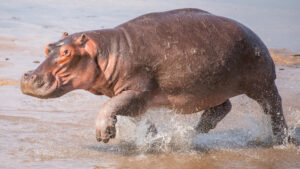“Over recent years the public sector has faced immense challenges, such as the COVID-19 pandemic. During difficult times, when morale and motivation have been tested, one quintessentially British refreshment has helped the nation to push through. Although the choice of hot drinks now available is extensive, a cup of tea remains the preferred choice. When paired with a biscuit, this combination is rocket fuel for the National Health Service.”
So begins the introduction to Direct Uptake of Nutrition and Caffeine Study (DUNCS): biscuit based comparative study. The paper, written by pediatric surgeon Ceri Jones and pediatric anesthetist John Francis, attempts to answer one of the UK’s most pressing questions: what’s scientifically the best way to enjoy a cuppa?
As an American, my preferred hot beverage/snack combo is, of course, coffee and donuts. I’ll generally go to any lengths to avoid falling back on tea as a caffeine delivery system. But I acknowledge that much of the world is into the tea and biscuit (cookie) thing.
With that in mind, let’s dig into this paper and see what our intrepid doctors found.
Methodology
Jones and Francis designed their experiment around the biscuits most commonly found in National Health Service hospital staff rooms — oat, digestive, rich tea, and shortie.
“To minimize the risk from heterogeneity, we limited our selection to single layer, non-coated, non-filled biscuit varieties,” they wrote.
Next, the pioneering researchers had to agree upon a standardized tea-making process. The eventual decision was 240mL of freshly boiled water poured over a single tea bag in an unwarmed mug combined with 30-40mL of milk at precisely 4˚C.
Baseline research indicated that “optimal palatability and agreed universal drinking temperature” was 61˚C, achieved between 330-450 seconds after pouring boiling water over the bag (the paper makes no mention of altitude).
Then biscuit testing began. Researchers repeated each experiment three times per biscuit.

An infographic summarizing the Direct Uptake of Nutrition and Caffeine (DUNC) study. Graphic: BMJ Publishing Group
DUNC test results
Since time to drinkable tea (TTDT) is such an important factor for busy medical professionals, the first test the scientists conducted was how dunking different types of biscuits affected tea cooling. Digestive biscuits won the day there, scoring a TTDT reduction of 130 seconds.
Oat biscuits came out on top in terms of caloric density, perhaps not a surprise, given their composition.
Saturation volume was the third test. Jones and Francis measured this by dropping tea into the center of each biscuit in 1mL intervals. The biscuit that absorbed the most tea before allowing liquid to permeate to a doily was declared the winner.

Results of the saturation test. Photo: Ceri Jones, John Francis
Next, the team measured crunch reduction via a decibel meter, with measurements taken before and after dropping 2mL of tea onto the biscuit.
The rich tea biscuit was the clear winner in the saturation volume test, while the digestive biscuit took top honors in terms of crunch reduction. But adventurers wanting the best combination of crunch reduction and saturation should look to oat biscuits — the second-place finisher of both tests.
Jones and Francis wrapped their tests with dunk breaking-point tests, an area where oat biscuits once again excelled.
Given all that, it’s no surprise that oat biscuits finished the testing as the number one choice once all the scores were tabulated.
“Biscuit dunking has a beneficial effect on tea cooling and should be encouraged, and the oat biscuit was the best at achieving this when compared with the digestive, rich tea, and shortie,” the scientists concluded.
You heard it here first, folks!






